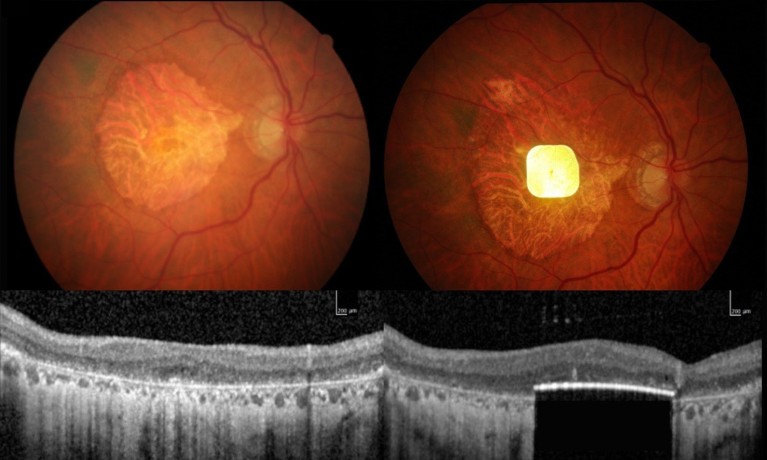Daily briefing: People with macular degeneration can read again after retinal implant
Article Date: 21 October 2025
Article URL: https://www.nature.com/articles/d41586-025-03442-5
Article Image: Retinal implant scan
Summary
A wireless retinal implant, paired with camera-equipped glasses, has restored functional vision — including the ability to read letters and words — in dozens of people with age-related macular degeneration (AMD). The device sits just under the retina and electrically stimulates remaining retinal neurons; a months-long training programme is required for patients to learn to interpret the signals. The briefing also highlights related short pieces: persistence of sleep-like waves after hemispherotomy, evidence that breastfeeding recruits protective CD8+ T cells in breast tissue, research on the upper limit of sustained human energy use, and debate about AI’s role in universities.
Key Points
- The retinal implant replaces lost light-sensitive cells by stimulating surviving retinal neurons, and works with camera-glasses to deliver visual information.
- Participants in the trial regained abilities such as reading letters and words, but successful use requires months of intensive training and rehabilitation.
- The implant study is reported alongside a NEJM paper; the result marks a notable advance in bionic-vision technology for AMD, the most common incurable blindness in older adults.
- Separate briefs: hemispherotomy can leave disconnected brain tissue producing slow, sleep-like delta waves; breastfeeding prompts recruitment of CD8+ T cells that may improve breast-cancer outcomes.
- Human endurance research suggests a long-term metabolic ceiling (~2.4× BMR) despite short-term peaks (some athletes burn ~9,000 kcal/day), linked to limits on nutrient absorption and compensatory reductions in other activity.
- Universities are split on AI: some integrate it across curricula while others tighten assessment to ensure learning isn’t outsourced to AI tools.
Content Summary
The lead story describes a subretinal, wireless implant combined with camera-glasses that converts visual scenes into electrical stimulation of surviving retinal cells. Trial participants showed measurable improvements in visual acuity sufficient to read letters and words, but clinicians emphasise that outcomes depend on extensive post-implant training and rehabilitation. The device does not fully restore natural vision but provides a meaningful functional gain for people with advanced AMD.
The briefing also summarises other short research updates: children who had hemispherotomy show slow wave electrical activity in disconnected tissue; pregnancy and breastfeeding remodel breast tissue and recruit CD8+ T cells that correlate with better cancer survival; a study on elite athletes reveals a sustained metabolic ceiling; and universities worldwide are debating how to adopt or restrict AI in teaching and assessment.
Context and Relevance
This is significant for clinicians, researchers and patients: AMD affects millions and current treatments cannot reverse advanced photoreceptor loss. The implant demonstrates practical progress in prosthetic vision and neuro-ophthalmology, and the NEJM-backed trial outcome will influence funding, regulation and rehabilitation programmes. The other briefs connect to wider trends — immune protection from reproductive history, neural plasticity and consciousness research, limits of human physiology, and the real-world impact of AI on higher education.
Why should I read this?
Short version: yes — the headline is not hype. People with late-stage AMD are reading again, albeit with a lot of training. If you care about vision tech, neuroprosthetics, or translational medicine, this is genuinely exciting. Plus, you get quick, useful updates on breastfeeding and cancer immunity, brain surgery findings, human endurance limits and how universities are wrestling with AI — all in one tidy briefing. We read the longer pieces so you don’t have to.

